Picking the right support for your tomatoes is one of the more personal decisions a gardener can make. Ask 10 gardeners how they prop up their tomatoes, and you’ll probably get 10 different answers! The possibilities seem almost endless.
Here at Growfully, we highly recommend testing out different tomato supports to figure out what works for you and your garden. Today, we’re going to show you what we use in our Growfully gardens. We’ve tried all the methods, and we’ve landed on loving tomato cages—but not the kind of cages you get at your local hardware store. Nope, we make our own big, sturdy tomato cages using concrete reinforcing wire (AKA: remesh). This makes for affordable cages that last for years and give all your indeterminate tomatoes the support they need!
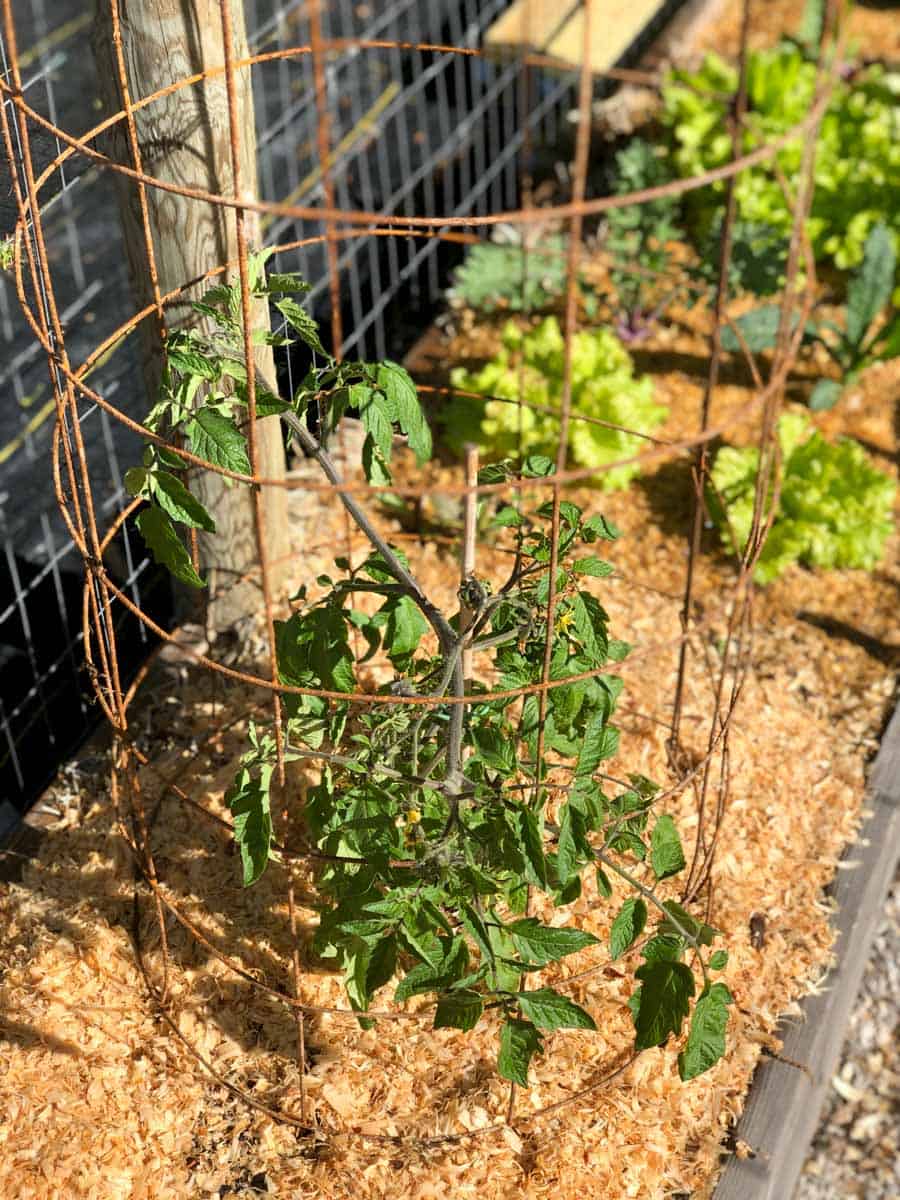
Table of Contents
Why Use a Tomato Cage
Tomato plants—especially indeterminate varieties—thrive with a little extra support. Their tall vines aren’t quite sturdy enough to hold the plant upright, and giving the plants a little extra help can lead to higher tomato yields, less tomato cracking, and fewer tomato diseases. Plus, it makes it easier to harvest and maintain your plants!
There are lots of ways to support your tomatoes—cages, trellises, stakes, twine, rebar, ladders, livestock paneling (AKA: cattle panels), t-posts, poles, Florida weaves, garden obelisks, pipes, fencing, zip ties, OH MY! Each of them have their uses, but we think tomato cages are the easiest way to give support to tomatoes, especially if you only have a few plants.
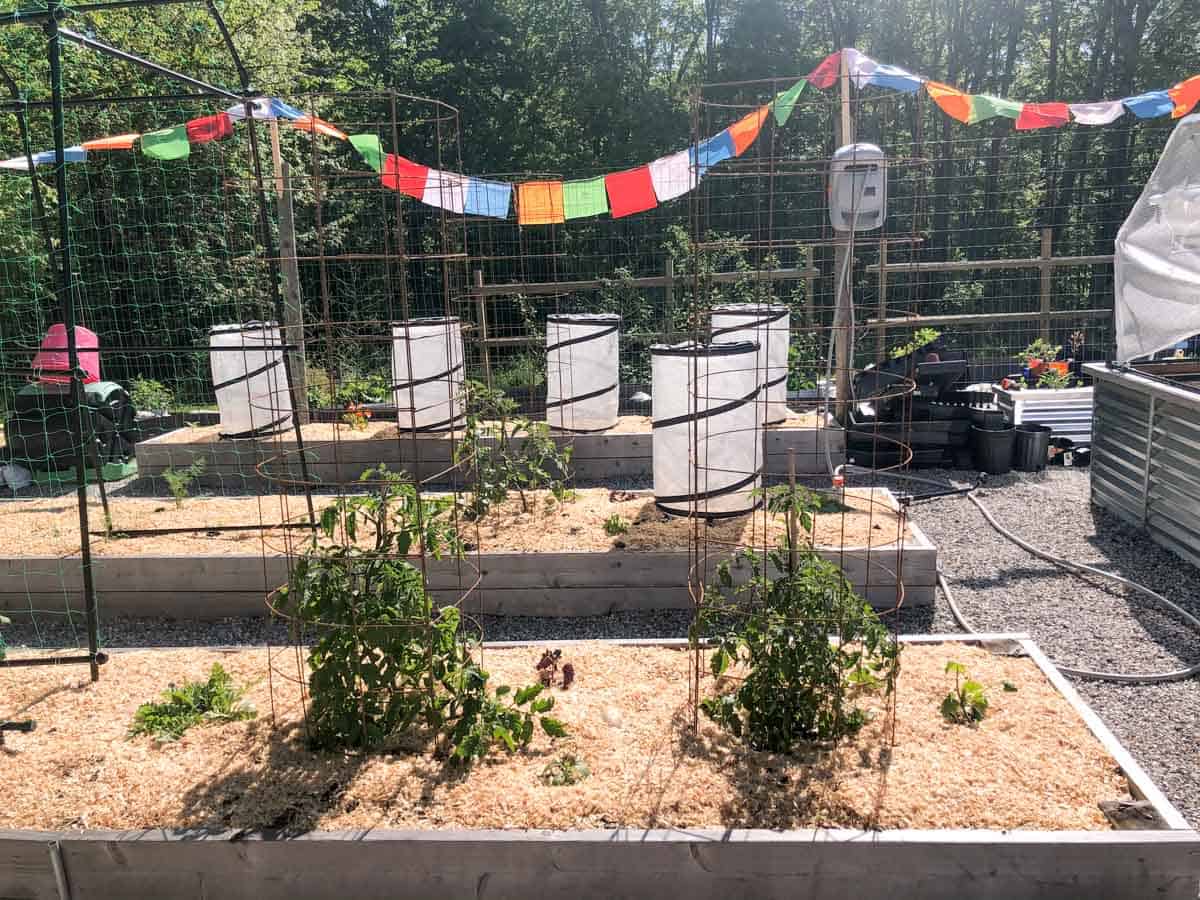
Tomato cages are the easiest of options for beginning gardeners—no need to prune or tie up your tomatoes as they grow—just make sure the leaves and stems grow through the holes in the tomato cage.
Many folks do prune their indeterminate tomato varieties to just one main stem, but when you use big tomato cages, you don’t have to! We stopped pruning tomatoes years ago with great results—we just let those big plants live their best lives, all while supported by their sturdy cages.
The BIG Problem with Store-Bought Tomato Cages
So if tomato cages are so wonderful, why should you make your own instead of just picking up the ones at garden centers? Well, those cages have one big problem—and that BIG problem is that they are entirely too SMALL!
Growfully Protip
Those small store-bought tomato cages do work well for many smaller determinate tomatoes.
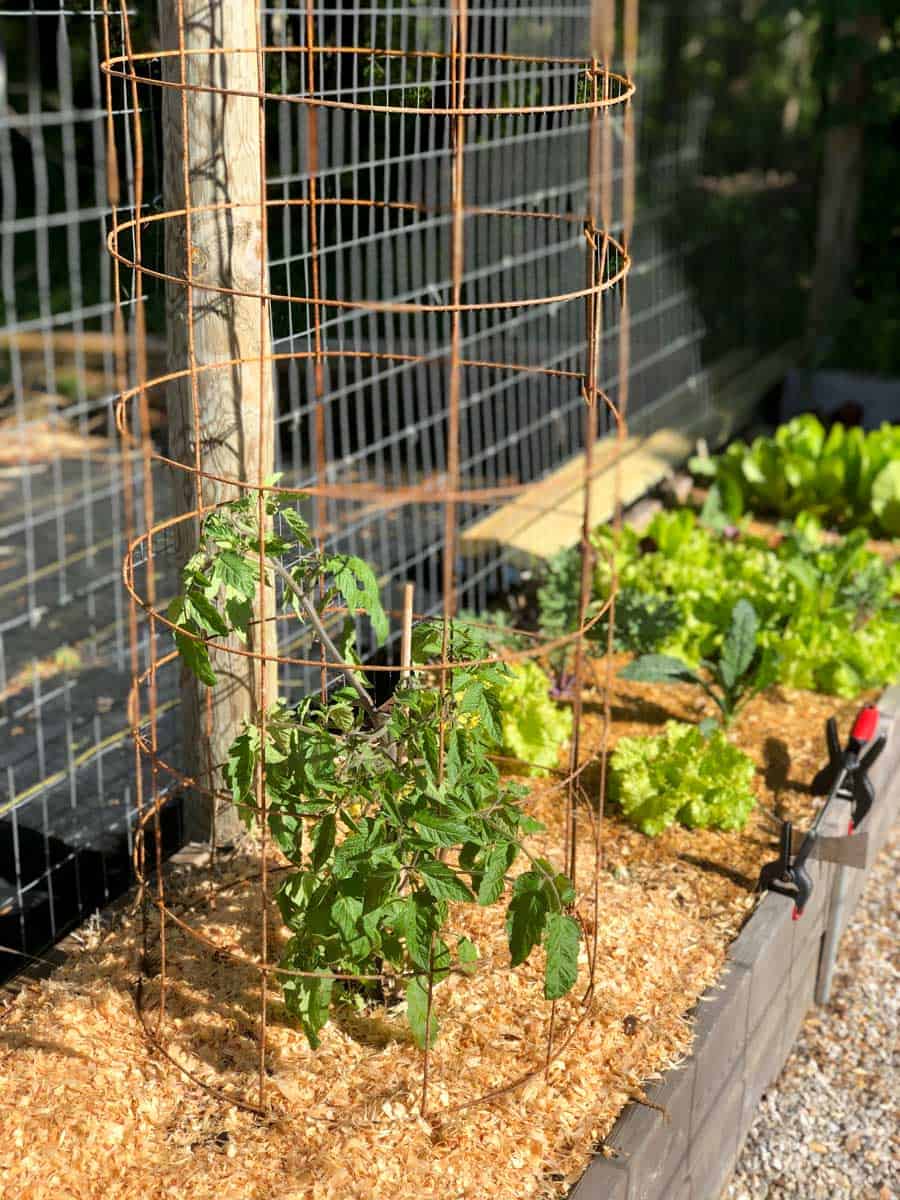
The cone-shaped tomato cages sold at the hardware store and on Amazon are wonderful for supporting small plants like peppers or eggplants, but indeterminate tomatoes can grow to be 6-8 feet tall or even more! Meaning a healthy tomato plant will outgrow those small tomato cages in a matter of weeks.
The solution? Make your own! You can make your own big, beefy tomato cages to support your big, beefy tomato plants for just a couple of dollars per plant.

What is the best material to use to make a DIY tomato cage?
We’ve tried out a number of different materials for making a DIY tomato cage, and landed on concrete remesh as our favorite option! Here’s why:
- Remesh comes in tall rolls to help us solve the small size issue! We use 5ft remesh rolls for our cages, but you can also grab 6ft or even 7ft if you plan to have giant tomato towers.
- It’s affordable—you can get a big roll of remesh and make your tomato cages for around $5 a pop.
- The wire mesh openings are large enough for you to harvest and maintain your plant well. Some other materials (like welded wire fencing) have small openings that can be hard to get your hands through.
- The wire is sturdy, but still malleable. These cages will last for years and hold up lots of heavy fruit, but the wire is still bendable enough that making the cages is easy.
- Concrete mesh is easy to find! Grab it at any larger hardware store. You can get it in a rusted look (which we like because it blends right into the garden) or in classic galvanized silver.

How to Make Your Own DIY Tomato Cage
You’ll be blown away by how easy it is to make these tomato cages. We made 10 of them—start to finish—in about 20 minutes. Here’s how to do it:

- Grab a roll of concrete remesh. You’ll want to wear gloves when handling the wire. Unroll the remesh on the ground.
- Measure out the proper length. You’ll want to calculate the circumference of your final cage to know how long of a section to cut.
- Using a pair of bolt cutters or sturdy wire cutters, cut through the wire in the middle of the squares all the way down the remesh—this allows you to wrap the open end to close it up later.
- When you have the section fully cut off, use the bolt cutters to cut off the bottom horizontal row off the remesh—this allows you to have “stakes” to secure the cage into the soil.
- Roll the section of remesh together into a cylinder. Bend the open ends around the opposite end to secure the cylinder in place.
- Push the cage into the soil around your tomato plant.
Growfully Protip
We did 20″ diameter tomato cages—which means we cut sections at the square closest to 63″ on the section of remesh. You can play with what size works best for you and your garden!
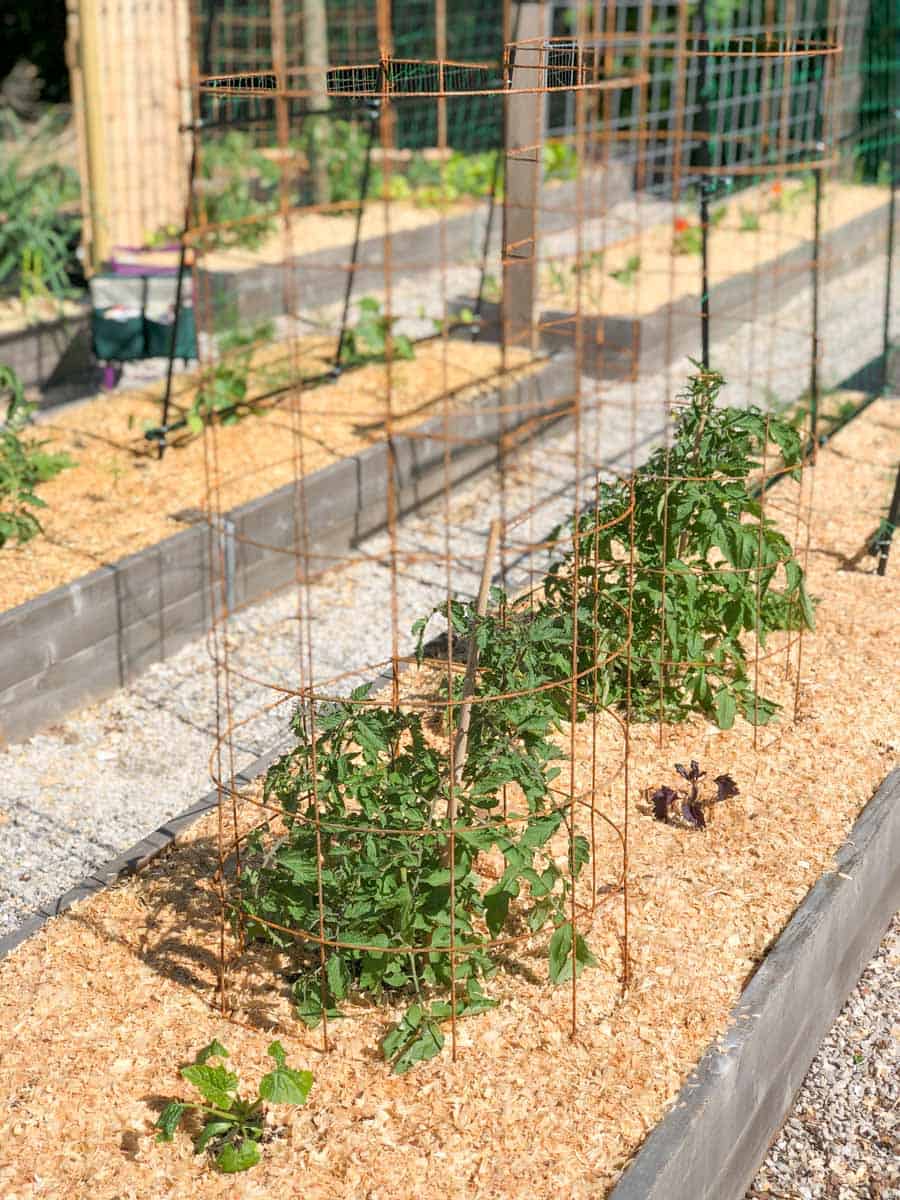
How do you store big tomato cages?
Storage is the one con with these DIY tomato cages—they can’t fold or condense to stash them in a corner in your garage. Thankfully because they are so sturdy, you can leave them outside all year long without worrying about them falling apart. In the Growfully Gardens, we do pull the cages up each fall and store them in our barn.
If you did want to make the cages set for easy storage, you could skip the part where you bend the wire to connect the cylinder, and instead use zip-ties to connect the two ends of the panel. Then, at the end of the growing season, clip the zip-ties, and you can store the panels flat.

How To Make A Sturdy DIY Tomato Cage
Materials
- Concrete remesh
Tools
- Sturdy gloves
- Measuring tape
- Bolt cutters or sturdy wire cutters
Instructions

- Put on your gloves, and unroll the remesh. Measure out the length to the circumference of your desired tomato cage.
- Using bolt cutters or sturdy wire cutters, cut through the middle of the squares all the way down the remesh at the desired length.
- Cut off the bottom horizontal row of the remesh so that there are open "stakes" at the bottom to drive into the garden soil.
- Roll the remesh into a cylinder, and bend the open ends over the mesh to secure the cage closed.
- Push the cage, cut ends down, into the soil around your tomato plant.
Notes
This calculator can help you figure out how long you need to cut your remesh pieces to get the final cage size you want!

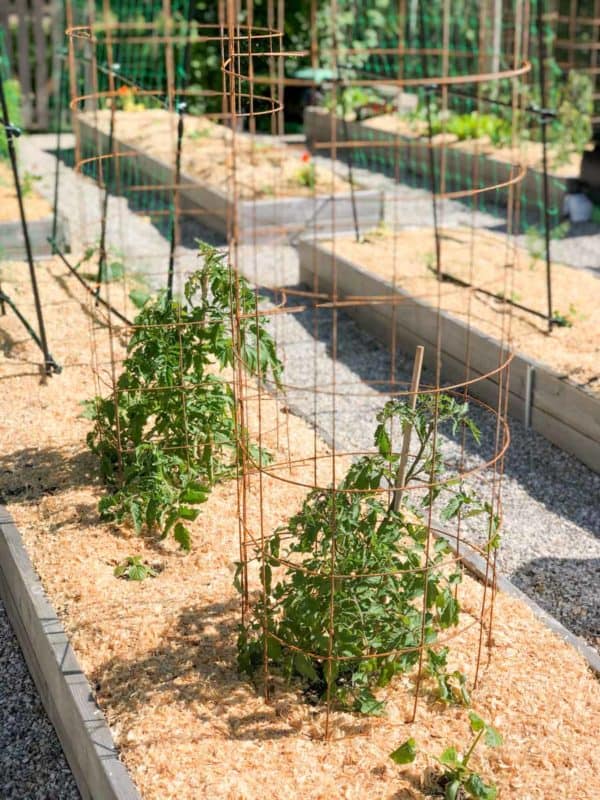






Thank you for the tutorial on tomato cages. I totally agree that commercial cages are too small. Back in the 90’s there was a product called tomato wire that was available from my local Agway (in Pittsburgh). I’ve searched the internet for tomato wire and can’t find it anywhere. This wire had large openings like the remesh but also didn’t rust.
I have an old copy of The Victory Garden book published by PBS that I bought back in the 80’s and I believe it’s mentioned in there too.
I would love to find tomato wire again. It was perfect. I have a few old cages from those days but they are slowly disintegrating.
I’ve been debating between cattle panel and the concrete remesh. I’ll have to give this a try 🙂 it seems the less expensive option.
We’re still very happy with these after using them for a few seasons, so I hope they work for you too!
Your tomato cages are brilliant! I can’t wait to go “concrete remesh” shopping.